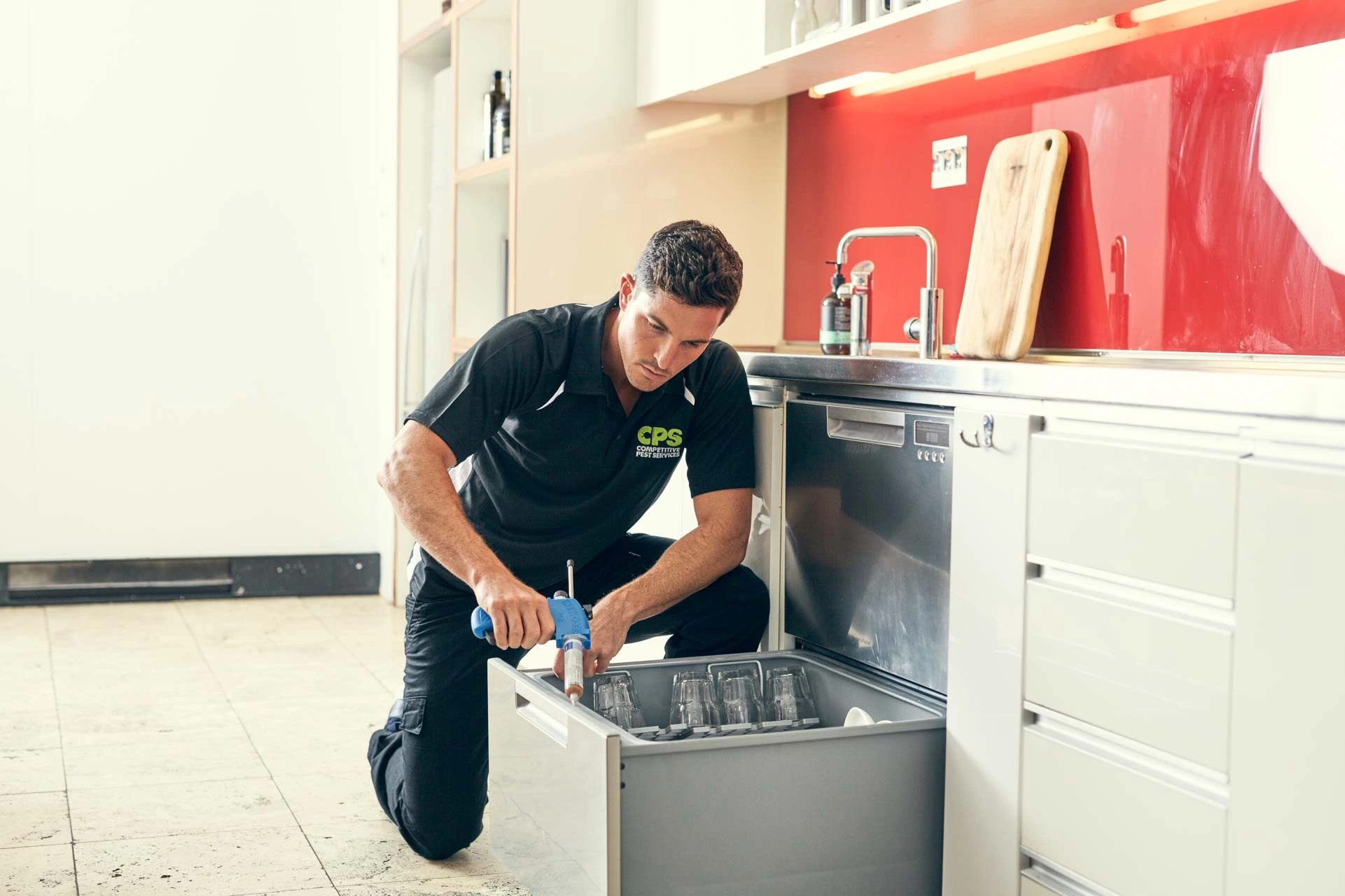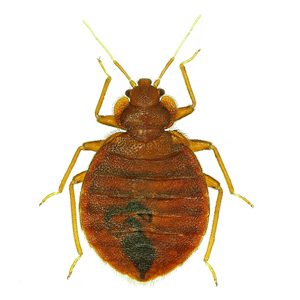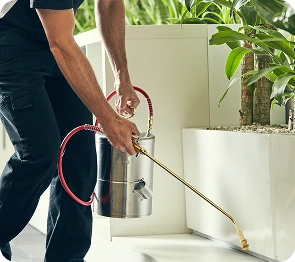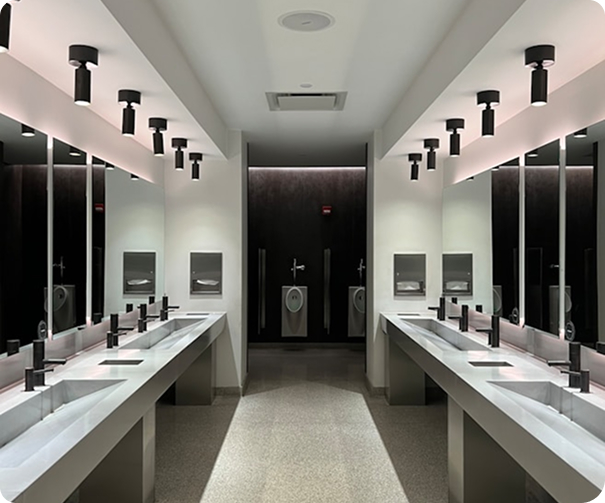Bed Bugs Pest Control and Treatment


Bed Bugs Pest Control

Bed bugs (Cimex lectularius) are small, flat, louse-like insects that survive exclusively on the blood of animals and humans. While they do not transmit diseases, their bites can cause red, itchy welts that are uncomfortable and irritating. Because of their small size and dark colouring, bed bugs are experts at hiding in hard-to-reach cracks, crevices, and furniture seams. This makes them difficult to detect and even harder to eliminate without professional help.
These pests are particularly problematic in places with high turnover of guests—such as hotels, motels, and rental properties—but they can also infest homes, public transport, and even offices. Once established, bed bugs spread quickly and often require extensive treatment to remove
The Long History of Bed Bugs
Bed bugs are not a modern problem—they have been pestering humans for over 3,500 years. Archaeological evidence shows they originally fed on bats before moving on to humans living in the same caves.
They were known in ancient Egypt, with references dating back to the time of the pharaohs. Over the centuries, bed bugs spread across the globe, thriving in densely populated cities and places with heavy travel.
Their resurgence in recent decades is partly attributed to international travel and the introduction of year-round heating, which provides the perfect environment for them to thrive indoors.
What Do Bed Bugs Look Like?
Adult bed bugs are oval, wingless, and around 5–6mm in length. They range in colour from reddish-brown to scarlet red after feeding on blood. Younger nymphs are paler, almost translucent, and measure between 1–4mm.
Their flattened bodies make them perfectly adapted for hiding. They squeeze into mattress seams, cracks in furniture, skirting boards, and even behind wallpaper. Because they are nocturnal and tend to feed at night, it is not unusual for people to live with bed bugs for weeks without actually seeing one.
Common Types of Bed Bugs in Australia
Although there are more than 90 species of bed bugs worldwide, only a handful are known to bite humans. In Australia, two main types are of concern, with Cimex lectularius being by far the most widespread.
Cimex lectularius (Common Bed Bug)
How they look
The common bed bug is the species most often responsible for infestations in Australian homes, hotels, and short-stay rentals. Adults are oval, flat, and reddish-brown, typically around 5–6mm in length. After a blood meal, their bodies become swollen and redder in colour.
Nymphs (immature bed bugs) are much smaller, ranging from 1–4mm, and are pale or almost translucent until they feed. All stages of this species are wingless, relying instead on crawling to move between hiding spots and feeding areas.
Where they live
Cimex lectularius thrives in temperate climates and is commonly found in beds, mattresses, lounges, and cracks in furniture. They are nocturnal, feeding at night and hiding during the day in seams, folds, and crevices close to where humans sleep.
Why they are a problem
This species reproduces quickly, with females laying hundreds of eggs in their lifetime. Without professional intervention, infestations can spread through entire households, apartment blocks, or hotels.
Cimex hemipterus (Tropical Bed Bug)
How they look
Closely related to Cimex lectularius, the tropical bed bug is slightly larger and more reddish in appearance. Like its cousin, it is wingless, flat, and oval-shaped.
Where they live
As the name suggests, Cimex hemipterus is more common in tropical and subtropical regions. In Australia, they are more frequently reported in northern states and coastal regions with warmer, humid conditions.
Why they are a problem
This species feeds in the same way as the common bed bug and causes identical bite reactions. They are equally hard to eliminate and can infest not only beds but also public transport, cinemas, and other places where people sit or rest for long periods.
Other Species
Other species of bed bugs exist in Australia, but they are much less common. Some primarily feed on birds or bats but will occasionally bite humans if their preferred hosts are unavailable. These cases are rare but can occur in homes with bird nests or bat roosts in the roof void or walls.
How to Identify Bed Bug Infestations
Bed bugs are tiny, elusive, and often difficult to detect. They are experts at hiding in cracks and crevices, which means an infestation can grow quickly before you realise it. Learning the early signs is crucial for tackling the problem before it spreads.
Quickest Ways to Identify Bed Bugs
Bed Bug Bites
The most common sign of bed bugs is their bite. These usually appear as small, red, itchy welts on exposed areas of skin such as the arms, legs, and neck. Unlike mosquito bites, bed bug bites often occur in clusters or in straight lines. Because they feed at night, the irritation is usually noticed in the morning.
While bed bug bites do not transmit disease, they can cause severe itching, inflammation, and even secondary infections if scratched excessively. Some people may also experience allergic reactions to the bites.
Blood Spots on Bedding
Another tell-tale sign of bed bugs is the presence of small blood smears on sheets, pillowcases, or mattresses. These occur when bed bugs are accidentally crushed after feeding, or when they leave behind droplets of blood. Regularly inspecting your bedding can help you detect an infestation early.
Faecal Stains and Droppings
Bed bugs excrete small, dark stains that resemble black ink dots. These stains can often be found along mattress seams, on bed frames, or nearby furniture. Over time, heavy infestations can create clusters of these droppings, leaving a noticeable mark on fabrics and surfaces.
Shedded Skin and Eggs
As they grow, bed bugs shed their outer skins multiple times. These cast-off shells look like empty, translucent bug casings and are often left in clusters near hiding places.
You may also notice tiny, white, oval-shaped eggs, each about the size of a pinhead. These eggs are sticky and often laid in protected areas such as mattress seams, cracks in wood, or behind wallpaper.
Distinctive Odour
Large infestations can produce a distinctive smell. This is often described as sweet, musty, or sickly. The odour comes from bed bug scent glands and tends to be strongest in heavily infested rooms.
Where Should You Look for Bed Bugs?
Mattresses and Bed Frames
Bed bugs often hide along seams, tufts, and folds of mattresses. They also conceal themselves in the joints and slats of bed frames and in the cracks of headboards.
Upholstered Furniture
Sofas, armchairs, and even decorative cushions can provide hiding spots. Check seams, zippers, and the folds of fabric for signs of activity.
Closets and Floorboards
Bed bugs may take shelter in clothing, shoes, and bags inside closets. They also hide in the small gaps where floorboards or skirting boards meet the wall.
Nightstands and Furniture
Bedside tables, drawers, picture frames, and even lampshades are common hiding spots. Bed bugs are drawn to areas close to where people sleep.
Luggage and Travel Risks
Hotels and hostels are common sources of bed bug spread. Bed bugs can hide in luggage stands, suitcases, or backpacks and easily hitch a ride back home. For this reason, it’s wise never to place luggage directly on the bed.
Signs of Heavy Infestation
In addition to bites and stains, heavy infestations may produce more obvious signs. You might see live bugs crawling on walls, furniture, or bedding. In severe cases, bed bugs may spread to electrical outlets, behind wallpaper, or even inside curtain pleats.
These infestations can grow rapidly—females lay hundreds of eggs in their lifetime—so swift detection and professional treatment are essential.
How to Prevent Bed Bug Infestations
Bed bugs have become more common across Australia in recent years, and once inside your home, they can be extremely difficult to eradicate. While hotels and hostels are often the first places people think of, any public space can harbour bed bugs, from cinemas to public transport.
Fortunately, there are several steps you can take to reduce the risk of bringing bed bugs into your home and prevent them from multiplying if they do get inside.
Replace Your Mattress Regularly
Replacing your mattress every 2–3 years may sound excessive, but it can help with bed bug prevention. Once bed bugs invade a mattress, they are difficult to detect and even harder to eliminate. While they can live elsewhere in your home, the bed is their most common hiding place.
If your mattress is already heavily infested, it’s usually best to dispose of it entirely rather than attempt removal.
Use Protective Mattress Covers
A plastic or specially designed bed bug–proof mattress cover can be a strong line of defence. Unlike regular sheets or protectors, these encasements trap any bugs inside and make it easier to spot new activity.
If you’ve travelled recently, always wash your clothing and bedding immediately in hot water before checking the protective cover for signs of bed bugs.
Vacuum Frequently
Regular vacuuming reduces the risk of infestations. Carpets, rugs, and upholstered furniture should be vacuumed at least once a week. If you suspect you’ve been exposed to bed bugs, vacuum daily until you’re confident your home is clear.
Always dispose of vacuum contents in a sealed plastic bag before placing it in the bin. Leaving them inside the vacuum risks spreading bed bugs further.
Use Essential Oils as a Natural Deterrent
Some natural remedies can help deter bed bugs from settling in your home. Add 6–10 drops of pure essential oil to a small spray bottle filled with ¼ cup of water, and spray around your home, as well as on items you carry outside like handbags, luggage, or clothing.
Essential oils believed to repel bed bugs include:
- Tea tree
- Eucalyptus
- Cinnamon
- Peppermint
- Lemongrass
- Clove
- Lavender
- Thyme
While not a complete solution, these can add an extra layer of prevention.
Declutter Your Home
Clutter creates countless hiding spots for bed bugs and makes inspections more difficult. By keeping your home tidy and reducing unnecessary items, you limit potential hiding places and make it easier to spot early signs of infestation.
How to Get Rid of Bed Bug Infestations
Bed bugs are among the toughest pests to remove. While sprays can kill live insects, they don’t always affect hidden eggs. Because eggs hatch later, infestations can reappear even after treatment. Bed bugs also hide in mattresses, furniture, baseboards, electrical outlets, and tiny cracks, which makes complete elimination challenging.
At-Home Actions to Reduce Bed Bugs
While these steps won’t completely wipe out an infestation, they can help control numbers while waiting for professional help:
Wash and Heat-Treat Fabrics
Strip beds, wash all bedding, curtains, and clothing in hot water (60°C or higher), and dry them on the hottest dryer setting. Heat is one of the most effective natural killers of bed bugs and their eggs.
Use Mattress and Pillow Encasements
Encasing mattresses and pillows in bed bug-proof covers traps bugs inside and prevents new ones from settling in. Over time, trapped bugs die without access to blood meals.
Apply Steam Treatments
High-temperature steamers can kill bed bugs and their eggs on contact. Focus on mattresses, furniture seams, and cracks where bugs may hide.
Professional Bed Bug Treatments
For complete eradication, pest control technicians use a combination of methods, often over multiple visits:
Residual Sprays & Dusts – Safe insecticides are applied to infested areas to kill bed bugs over time.
Steam & Heat Treatments – Professional-grade equipment delivers lethal heat to kill bed bugs and eggs in deep hiding spots.
Follow-Up Treatments – Multiple visits are usually needed to break the life cycle and ensure no re-infestation.
Monitoring – Traps and interceptors are sometimes used to confirm bed bugs are gone.
Call a Pest Control Professional
Even with diligent cleaning and home remedies, most infestations survive without professional treatment. Bed bugs are resilient, breed quickly, and are excellent at hiding.
A licensed pest control company can confirm the infestation, apply targeted treatments, and return for follow-up inspections until the infestation is gone. Non-toxic alternatives are also available if you want to avoid harsh chemicals.
Need help now? Book a professional bed bug inspection on 1300 766 614. Our experts will assess your property, explain your options, and create a tailored plan to eliminate bed bugs and stop them from coming back.
Frequently Asked Questions (FAQ)
How do bed bugs reproduce?
Female bed bugs are prolific breeders. A single female can lay 200–500 eggs over her lifetime, typically in batches of around 10. Eggs are tiny, white, and about the size of a pinhead.
The eggs hatch within 7 to 30 days, depending on temperature. Newly hatched nymphs immediately begin feeding on blood to progress through their five growth stages, each requiring a full meal before moulting.
By adulthood (about 4–6 weeks in warm conditions), bed bugs are ready to reproduce. Adults live 4–6 months on average, but in cool conditions, they have been known to survive without a blood meal for up to 11 months.
Do bed bugs spread disease?
Unlike mosquitoes or ticks, bed bugs are not known to transmit diseases. However, their bites can be very irritating and may cause:
- Red, itchy welts (often in clusters or straight lines)
- Allergic reactions in sensitive individuals
- Secondary infections from scratching
- Stress, anxiety, and sleep disturbance in heavy infestations
So while they aren’t disease carriers, they can significantly impact health and well-being.
Can you see bed bugs?
Yes, bed bugs are visible to the naked eye. Adult bed bugs are about the size of an apple seed (5–6mm long), reddish-brown, and flat-bodied. However, their ability to hide in tiny cracks, mattress seams, and furniture joints makes them very hard to detect without close inspection.
Nymphs (young bed bugs) are even smaller—just 1–4mm—and lighter in colour, making them even more difficult to spot.
What kills bed bugs instantly?
The most effective way to kill bed bugs instantly is exposure to high heat. Temperatures above 60°C (for washing/drying clothes and bedding) or direct steam treatments on furniture and cracks will kill bed bugs and their eggs on contact.
Chemical sprays, rubbing alcohol, and certain insecticides can also kill bed bugs directly, but they are often less reliable because they may not reach hidden bugs or eggs.
Can bed bugs fly?
No, bed bugs cannot fly. They also do not jump. They move by crawling and are excellent at climbing walls, furniture, and even ceilings to reach their host.
Can you see bed bugs with the naked eye?
Yes, adult bed bugs are large enough to see without magnification. However, they are flat, dark, and very skilled at hiding in cracks, mattress seams, and behind furniture. Their eggs and nymphs are much smaller and harder to detect.
If you’re unsure whether you’ve seen one, look for other signs such as blood spots on sheets, black faecal marks, or shed skins.
Pest control for the home and business
We offer expert pest eradication and prevention services for every environment – from homes and commercial kitchens to healthcare and offices. Explore the solutions we provide to keep your spaces safe, clean, and protected long-term.
Common pests we deal with
We deliver tailored, long-lasting pest control with a focus on safety, service and results.
From ants and cockroaches to bed bugs and pantry pests, we treat the full range of infestations found in Australian homes and businesses. Our trained technicians know how to identify the issue quickly and apply the right solution to remove pests – and keep them from coming back.
Ants are attracted to food sources and can contaminate food areas, often requiring professional help to locate and remove nests.
Bed bugs infestations are notoriously difficult to beat and hide in bedding and furniture, leaving bites and stains as signs of infestation.
Cockroaches thrive in warm, moist environments, breed quickly, and can leave behind odours and stains—early treatment is key.
Fleas feed on blood, mostly living off pets, and can survive dormant in the environment for months. Professional treatment is often needed.
Silverfish are fast, wingless insects that prefer warm, dark areas and can live for years, feeding on starchy or synthetic materials.
The formidable appearance and size of spiders makes them the most feared of all the creepy crawlies. However most spiders are harmless and avoid people.
Pantry moths infest dry food and can contaminate large amounts of it with webbing and droppings, regular checks and baits help prevent them.
Carpet beetles damage rugs and feed on hair, skin, and feathers, often going unnoticed until larvae husks or damage appears in hidden spaces.
Rodent control that removes the risk — fast and for good
Rats and mice pose serious health, safety and hygiene risks for homes and businesses. Our trained technicians quickly identify entry points, eliminate infestations, and implement proven prevention measures to keep rodents out for good.
Bird problems controlled with expert, long-term solutions
Birds can damage buildings, spread disease, and disrupt operations. We provide specialist bird control using proven methods and premium materials—designed to stop nesting, roosting and mess, and keep birds from coming back.
Termite protection that stops damage before it starts
Termites can silently destroy timber structures, causing costly and sometimes irreversible damage. Our licensed technicians use advanced detection tools and proven treatment systems to eliminate colonies and protect your property long-term.
Bed bug infestations found fast — and stopped for good
Bed bugs can spread quickly, cause discomfort, and damage your reputation if left untreated. Our expert team knows how to detect the early signs, eliminate infestations at the source, and prevent them from coming back with proven, long-term solutions.
National hygiene service. Local teams you can trust.
We deliver consistent, high-quality hygiene services to businesses across Australia. Unlike global franchises or contractors, our full-time staff operate nationwide—so you get reliable service, clear accountability, and a standard of care you can trust, no matter where you are.
Safe for families and pets
We work with the latest in safe pest control technologies and treatments, keeping your staff and customers safe. Our professionally trained technicians use targeted solutions at the source of the problem to keep bugs out and keep your business safe.
Our ISO1401 certification for environmental impact management and HACCP food safety certification means you can trust Competitive Pest Control Services care about the safety and protection of your facility.
Our technicians use only the safest, environmentally friendly treatments available in and around your home, to keep pests at bay giving you peace of mind as the kids continue to play in a safe and healthy environment.
There’s more to effective pest control than chemicals. We target our applications to the source of the problem from enhanced inspections to exclusion methods followed by protection.
All our treatments are environmentally friendly, because we love the Earth as much as you do. Our expertise enables us to keep chemical application to a minimum to keep the pests away, and we’re 100% carbon neutral.




